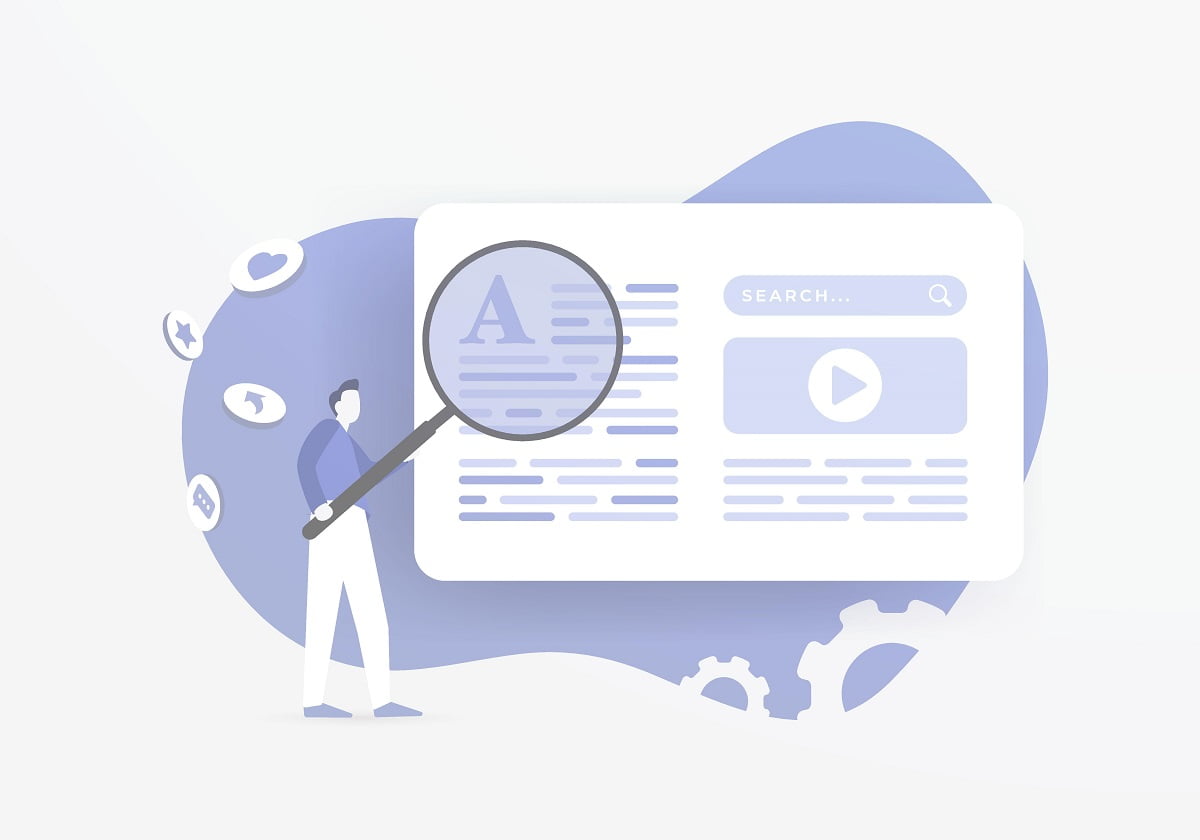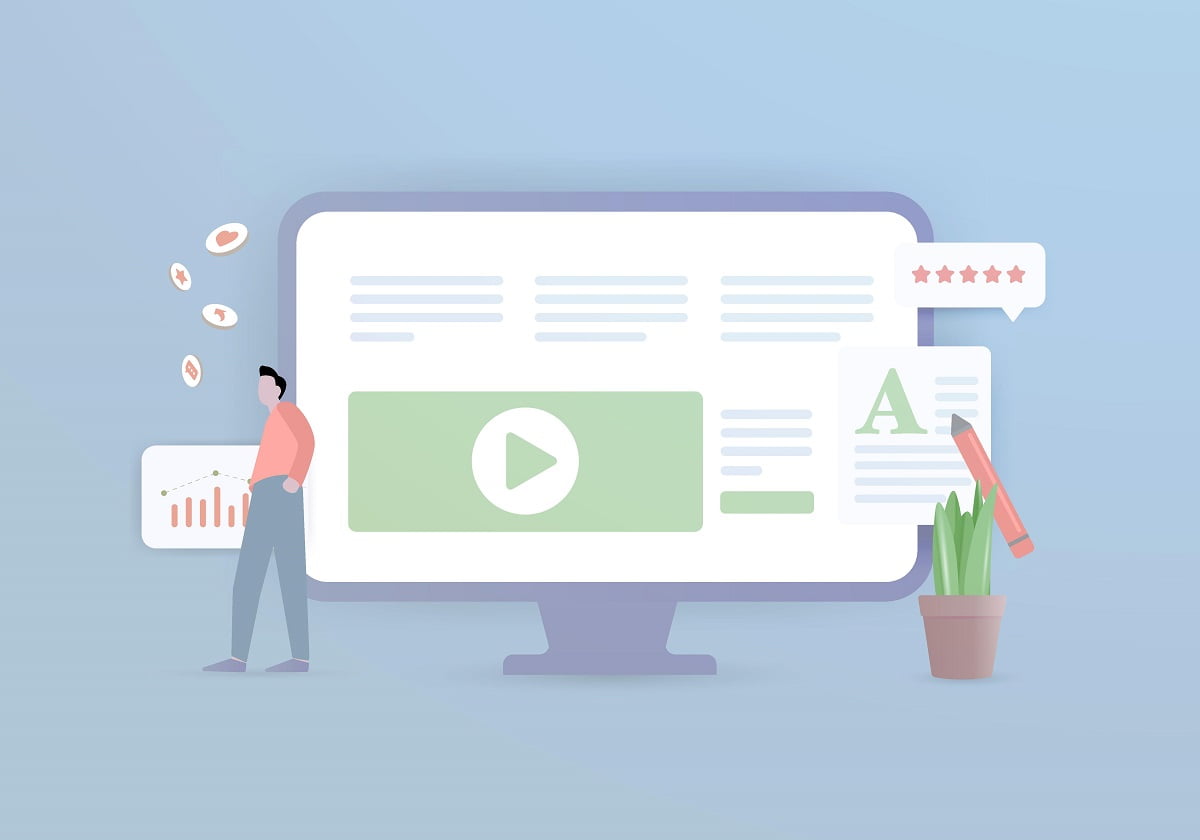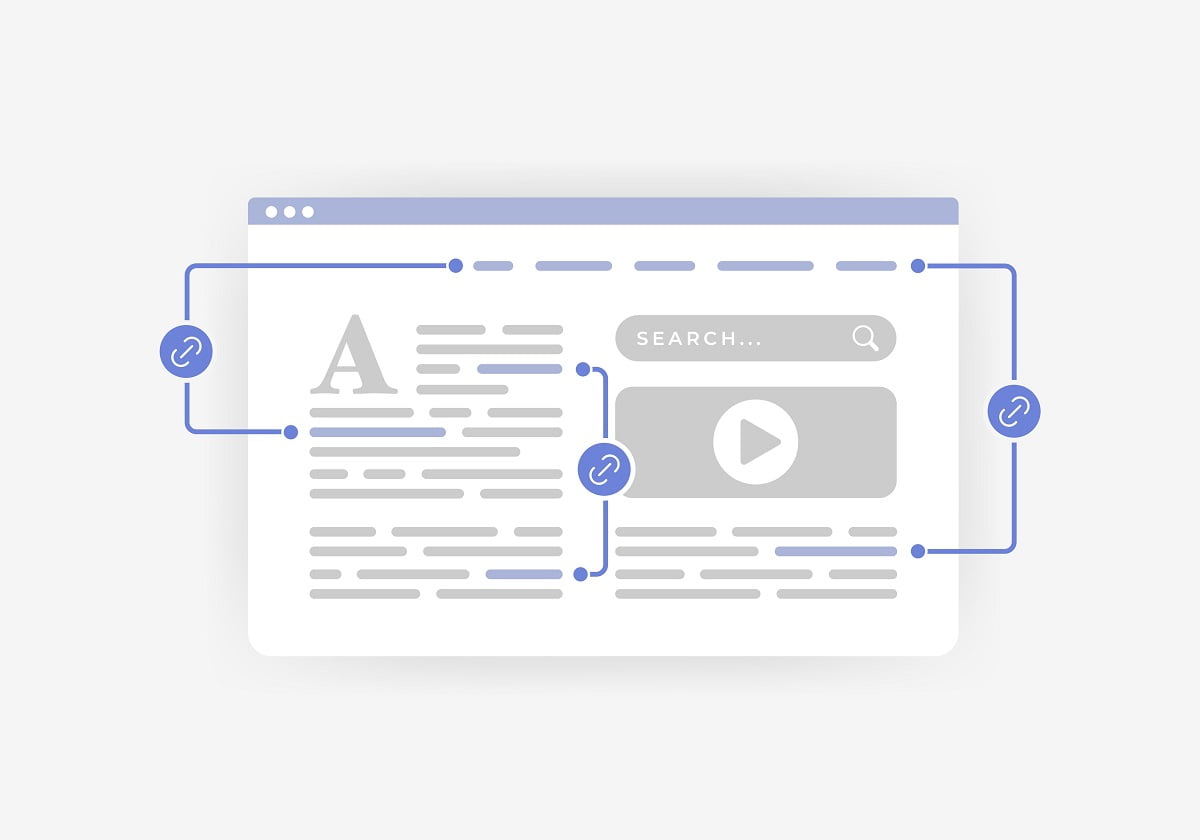Effective Blog Marketing Strategy Tips And Tricks

Welcome to our article on effective blog marketing strategy tips and tricks. In today’s digital landscape, having a well-defined blog marketing plan is crucial for enhancing your online presence and engaging more readers. Whether you’re a seasoned blogger or just starting out, this comprehensive guide will provide you with proven strategies to take your blog to the next level.
Did you know that businesses with a blog generate 126% more leads than those without one?
Key Takeaways:
- Identify and define your target audience to tailor your content effectively.
- Create compelling and relevant content that resonates with your readers.
- Optimize your blog for search engines to attract organic traffic.
- Promote your blog on social media platforms to reach a wider audience.
- Implement monetization strategies to turn your blog into a profitable venture.
Understanding the Importance of a Blog Marketing Strategy
Before diving into the tips and tricks, it’s crucial to realize the significance of a well-defined blog marketing strategy and its impact on your blog’s success. Many bloggers wonder, “Why is my blog not getting traffic?” and the answer often lies in the absence of an effective marketing strategy.
A blog marketing strategy encompasses a comprehensive plan that outlines the specific actions to be taken to promote and market your blog to your target audience. It involves identifying your target audience, understanding their needs and preferences, and tailoring your content and promotional efforts to effectively engage and attract them.
Why is my blog not getting traffic?
One of the biggest reasons why many blogs fail to generate traffic is the lack of a well-thought-out marketing strategy. Without a clear plan in place, your blog may get lost in the vast sea of online content, struggling to stand out and attract the attention it deserves.
A blog marketing strategy helps you define your goals, identify your target audience, and establish the most effective channels and tactics to reach and engage them. It enables you to optimize your blog for search engines, promote it through various online platforms, and ultimately drive organic traffic.
Are blogs effective for marketing?
Yes, blogs can be incredibly effective for marketing purposes. They offer a unique platform for you to share valuable content, establish yourself as an expert, and build a loyal community of readers and customers.
Blogs provide a space for you to showcase your expertise, share your brand story, and provide valuable insights to your target audience. They serve as a hub of information, attracting readers who are actively seeking answers or guidance in your niche. By consistently producing high-quality content and optimizing it for search engines, blogs have the power to attract organic traffic and drive meaningful engagement.
Blogging is a highly effective form of content marketing. It allows you to connect with your audience on a personal level, build trust, and establish your brand as a thought leader in your industry.”
However, it’s important to note that simply launching a blog is not enough. To effectively leverage the potential of blogs for marketing, you need to develop a well-defined strategy that aligns with your business goals and objectives.
Defining Your Blog’s Target Audience
Identifying and understanding your target audience is a crucial step in any successful blog marketing strategy. By defining your target audience, you can tailor your content to engage and attract them effectively, ultimately driving blog promotion and increasing audience engagement.
Understanding Your Target Audience
To define your target audience accurately, it is essential to conduct thorough research and gather insights about their demographics, interests, and behaviors. This will help you create content that resonates with them and addresses their specific needs and pain points.
“Knowing your audience is the key to success in any marketing effort. By understanding who your readers are, you can tailor your content to their preferences, increasing the chances of blog promotion and audience engagement.” – Digital Marketing Expert
Strategies for Defining Your Target Audience
Here are some effective strategies to define your blog’s target audience:
- Conduct Market Research: Use tools and techniques such as surveys, interviews, and data analysis to gather information about your audience’s demographics, interests, and online behavior.
- Create Buyer Personas: Develop detailed profiles of your ideal readers, including their age, gender, occupation, hobbies, goals, and pain points. This will enable you to create content specifically tailored to their needs.
- Analyze Your Existing Audience: Study your current blog audience to identify common characteristics, engagement patterns, and preferences. This data can provide valuable insights for attracting similar individuals to your blog.
- Monitor Competitors: Analyze the target audience of your competitors’ blogs to gain insights into the demographics and interests of your potential readers.
Tailoring Your Content for Audience Engagement
Once you have a clear understanding of your target audience, it’s important to tailor your content to engage and attract them effectively. Here are some tips to maximize audience engagement:
- Create Relevant and Valuable Content: Focus on topics that are of interest to your target audience and provide valuable insights or solutions to their problems.
- Use the Right Tone of Voice: Adapt your writing style to match the preferences and expectations of your target audience. Whether it’s formal, conversational, or humorous, choose a tone that resonates with them.
- Incorporate Multimedia Elements: Use images, videos, infographics, and other visual elements to enhance the appeal and engagement of your blog posts.
- Encourage Interaction and Feedback: Prompt readers to leave comments, share their thoughts, and engage in discussions. Respond to comments and messages promptly to foster a sense of community and connection.
By defining your blog’s target audience and tailoring your content to engage and attract them effectively, you can enhance your blog promotion efforts and increase audience engagement. In the next section, we’ll discuss strategies for crafting compelling and relevant content that resonates with your target audience.
Crafting Compelling and Relevant Content
When it comes to the success of your blog, the content you create is paramount. The quality, relevance, and value of your blog posts play a pivotal role in engaging your target audience and keeping them coming back for more. In this section, we will explore strategies for crafting compelling and relevant content that resonates with your readers and contributes to your blog’s overall marketing goals.
Understanding Your Audience’s Needs
To create compelling content, you first need to understand the needs, interests, and pain points of your target audience. By identifying their aspirations, problems, and challenges, you can tailor your blog posts to provide valuable solutions and insights. Conduct thorough research, analyze reader feedback, and use tools like Google Analytics to gain a deeper understanding of your audience’s preferences and interests.
Choosing Relevant Topics
Once you have a clear understanding of your audience, it’s time to choose topics that are relevant and resonate with them. Consider the questions your readers may have, the trends in your industry, and the challenges they face. By addressing these topics and providing valuable information, you position yourself as a trusted source and establish your blog as a go-to resource.
Creating Engaging Headlines
The headline is the first impression your readers have of your blog post, so it needs to be attention-grabbing and compelling. Craft headlines that are concise, clear, and enticing, offering a glimpse of what readers can expect from the content. Use power words, numbers, and actionable language to pique curiosity and entice readers to dive into your post.
Structuring Well-Formatted Content
An organized and well-structured blog post makes it easier for readers to consume and engage with your content. Break your content into sections and use subheadings to guide readers through the main points. Use bullet points, numbered lists, and bold text to highlight key takeaways, making it easier for readers to scan and retain information.
Utilizing Visual Content
Visual content such as images, infographics, and videos can enhance the appeal and effectiveness of your blog posts. Visuals not only break up the text and make it more visually appealing but also help convey information in a more engaging and memorable way. Incorporate relevant visuals that align with your content and reinforce your message.
Injecting Authenticity and Personality
Readers resonate with blogs that have a unique voice and personality. Inject your own authenticity into your writing style by sharing personal experiences, anecdotes, and opinions. Showcasing your personality helps build a connection with your readers, making them feel like they’re engaging with a real person.
Encouraging Reader Interaction
Engage your readers and encourage interaction by asking questions, including calls-to-action, and inviting them to leave comments. Foster a sense of community by responding to comments and engaging in conversations with your readers. The more you involve your audience, the more invested they become in your blog.
Measuring and Analyzing Content Performance
Track and analyze the performance of your blog content to identify what resonates with your audience and what doesn’t. Use analytics tools to measure metrics such as page views, time on page, and social shares. Pay attention to comments and feedback from your readers to gain insights into their preferences and interests.
Delivering Value with Each Post
Above all, ensure that each blog post delivers genuine value to your readers. Make it your priority to educate, inspire, and inform your audience with every piece of content you publish. When you consistently provide value, your readers will come to rely on your blog as a trusted source of information and eagerly await your future posts.
| Benefits of Crafting Compelling and Relevant Content | How It Improves Your Blog’s Success |
|---|---|
| 1. Increased Audience Engagement | Captivating content attracts and keeps readers engaged, increasing time spent on your blog and encouraging repeat visits. |
| 2. Enhanced Brand Authority | Compelling content positions you as an expert in your field, helping establish your brand’s authority and credibility. |
| 3. Improved Search Engine Visibility | When your blog posts provide valuable, relevant content, it can lead to higher search engine rankings and increased organic traffic. |
| 4. Higher Conversion Rates | By crafting content that speaks directly to your target audience’s needs and interests, you can increase the likelihood of conversions and sales. |
| 5. Expanded Reach and Social Sharing | Compelling content that resonates with readers is more likely to be shared on social media, expanding your blog’s reach and attracting new followers. |
Optimizing Your Blog for Search Engines
When it comes to gaining visibility and attracting organic traffic to your blog, effective search engine optimization (SEO) is key. By optimizing your blog for search engines, you can increase your chances of ranking higher in search results, ultimately driving more traffic to your site. Here are some essential tips and techniques for blog SEO optimization:
1. Conduct Keyword Research
Start by identifying relevant keywords that your target audience is likely to search for. Use tools like Google Keyword Planner or SEMrush to discover popular keywords and phrases related to your blog’s niche. Incorporate these keywords naturally into your blog posts, headlines, and meta tags to improve your chances of ranking well in search results.
2. Create High-Quality Content
Search engines prioritize websites with high-quality, valuable content. Aim to create well-written, informative blog posts that provide genuine value to your audience. Ensure your content is original, engaging, and relevant to your target keywords. This approach will not only improve your SEO but also increase reader engagement and encourage social sharing.
3. Optimize On-Page Elements
Optimize your blog’s on-page elements to improve its visibility to search engines. Pay attention to the following key elements:
- Meta Tags: Craft compelling meta titles and descriptions that include your target keywords to improve click-through rates in search results.
- URL Structure: Use descriptive, keyword-rich URLs that accurately reflect the content of your blog posts.
- Heading Tags: Utilize H1, H2, and H3 tags to structure your blog posts. Incorporate relevant keywords into your headings to improve search engine visibility.
- Image Optimization: Add alt tags to your images using relevant keywords to optimize them for search engines.
4. Build High-Quality Backlinks
Backlinks are an essential factor in search engine rankings. Seek opportunities to build high-quality backlinks from reputable websites within your niche. Guest blogging, influencer collaborations, and content promotion can help you secure valuable backlinks that enhance your blog’s visibility and authority.
5. Improve Site Speed and Mobile Responsiveness
Search engines prioritize websites that offer a seamless user experience. Ensure your blog loads quickly and is mobile-friendly, as these factors can impact your search engine rankings. Optimize images, leverage caching and compression techniques, and choose a responsive design to enhance your blog’s performance.
6. Monitor and Analyze Performance
Regularly monitor and analyze your blog’s performance using tools like Google Analytics. Track important metrics such as organic traffic, bounce rate, and average time on page to identify areas for improvement. Make data-driven decisions to refine your blog’s SEO strategy and optimize its growth.
By implementing these blog SEO optimization techniques, you can enhance your blog’s visibility, attract organic traffic, and improve your chances of achieving higher search engine rankings.
| Benefits of Blog SEO Optimization | Techniques for Blog SEO Optimization |
|---|---|
| Improved visibility in search results | Conducting keyword research |
| Increased organic traffic | Creating high-quality content |
| Higher search engine rankings | Optimizing on-page elements |
| Enhanced user experience | Building high-quality backlinks |
| Increased reader engagement | Improving site speed and mobile responsiveness |
| Measurable performance tracking | Monitoring and analyzing performance |
Promoting Your Blog on Social Media
Social media has become an essential tool for bloggers to promote their content and expand their reach to a wider audience. With billions of active users, platforms like Facebook, Twitter, Instagram, and LinkedIn offer a powerful opportunity to drive traffic and increase engagement on your blog. In this section, we will discuss effective strategies and best practices for promoting your blog on popular social media platforms.
1. Create a Consistent Brand Presence
Building a consistent brand presence across your blog and social media channels is key to attracting and retaining followers. Use your blog’s logo, colors, and fonts to create a cohesive visual identity that resonates with your target audience. Maintain a consistent tone of voice in your blog posts and social media captions to establish your brand’s unique personality.
When promoting your blog on social media, focus on sharing high-quality and engaging content that offers value to your audience. Craft attention-grabbing headlines, use captivating visuals, and include a call-to-action that encourages users to visit your blog. Experiment with different types of content, including blog posts, videos, infographics, and polls, to keep your social media feed diverse and interesting.
3. Engage with Your Audience
Building a strong relationship with your audience is vital for blog promotion on social media. Respond to comments, answer questions, and acknowledge user-generated content to show that you value your followers’ engagement. Regularly engage with influencers and thought leaders in your niche through comments, shares, and mentions to expand your reach and build connections within your industry.
Hashtags are a powerful tool to increase the discoverability of your blog content on social media. Research relevant hashtags in your industry and incorporate them strategically into your posts. Use a mix of popular and niche-specific hashtags to reach a broader as well as a more targeted audience. However, avoid using too many hashtags in a single post, as it can make your content appear spammy.
5. Leverage Social Media Advertising
To further enhance your blog promotion efforts, consider leveraging social media advertising. Platforms like Facebook and Instagram offer various advertising options to boost the visibility of your blog posts, drive targeted traffic, and reach new audiences. Set clear objectives, define your target audience, and create compelling ad creative to maximize the effectiveness of your social media advertising campaigns.
Remember, promoting your blog on social media requires consistent efforts and a well-planned strategy. Regularly analyze your social media performance, track engagement metrics, and adjust your approach accordingly. By following these strategies and best practices, you can effectively promote your blog for free and achieve greater visibility, increased traffic, and improved audience engagement.
Generating Blog Traffic Through Guest Blogging
Guest blogging can be an effective strategy to drive blog traffic and increase the visibility of your blog. By writing and publishing articles on other reputable websites, you can tap into their existing audience and attract new readers to your own blog. In this section, we will explore the steps to identify and approach potential guest blogging opportunities, ensuring maximum impact on your blog’s growth.
When looking for guest blogging opportunities, start by researching websites that cater to your target audience. Look for reputable blogs within your niche or related industries that align with your content. These blogs should have an engaged readership and a history of publishing high-quality articles.
Once you have identified a list of potential guest blogging platforms, review their guidelines and submission process. Pay close attention to their preferred topics, formatting requirements, and any specific criteria they may have. This will help ensure that your articles are accepted and published on these platforms.
When approaching editors or blog owners, personalize your email and demonstrate your knowledge of their blog. Explain why your article would be a valuable addition to their platform and how it aligns with their readers’ interests. Be sure to highlight your expertise and provide samples of your previous work.
When writing your guest blog post, remember to create valuable, informative content that resonates with the readers of the host blog. Offer unique insights, actionable tips, or compelling stories that demonstrate your expertise and provide value to the audience.
After your guest blog post is published, actively promote it through your own blog and social media channels. Encourage your existing audience to visit the guest blog and engage with the content. By driving traffic to the guest post, you not only increase its visibility but also showcase your expertise to a new audience.
Remember to track the results of your guest blogging efforts. Analyze the traffic generated from each guest blog post and assess its impact on your overall blog traffic. This will help you identify the most successful guest blogging opportunities and refine your strategy for future collaborations.
Monetizing Your Blog
If you’re looking to monetize your blog, we understand the importance of turning your passion into a profitable venture. In this section, we’ll provide you with valuable insights and proven strategies for effectively monetizing your blog. From sponsored content to affiliate marketing, we’ll explore various methods that can help you generate income from your blog.
Leveraging Sponsored Content
One popular way to monetize your blog is through sponsored content. Brands are often willing to pay bloggers to create posts featuring their products or services. By collaborating with relevant brands and creating authentic sponsored content, you can generate income while keeping your readers engaged.
When considering sponsored content, it’s crucial to maintain transparency and genuine recommendations. Your readers trust your expertise, so it’s important to only partner with brands and products that align with your blog’s niche and values.
Utilizing Affiliate Marketing
Affiliate marketing is another effective way to monetize your blog. By promoting products and earning a commission for every sale or lead generated through your unique affiliate links, you can create a passive income stream.
As an affiliate, it’s essential to choose products or services that resonate with your audience and provide genuine value. Recommending products you personally use and believe in will establish trust with your readers and increase the likelihood of conversions.
Creating and Selling Digital Products
If you have specialized knowledge or skills, consider creating and selling digital products on your blog. eBooks, online courses, templates, and exclusive content can be highly sought after by your audience, providing an additional income stream.
Ensure your digital products are high-quality and deliver value to your readers. Tailor your offerings to solve specific pain points or meet the needs and interests of your target audience. Promote your digital products through captivating blog posts and strategic marketing campaigns to maximize sales.
Offering Consulting or Coaching Services
If you have expertise in a particular field or niche, offering consulting or coaching services can be a lucrative way to monetize your blog. Many readers value personalized guidance and are willing to pay for your expertise.
Create packages or hourly rates for your consulting or coaching services, clearly outlining the benefits and value that clients can expect. Establish your credibility by sharing success stories or testimonials from previous clients to showcase your expertise.
Diversifying Your Revenue Streams
While focusing on one monetization method can be effective, consider diversifying your revenue streams to maximize your blog’s earning potential. By combining various strategies, you can create multiple income streams, reducing reliance on a single source of revenue.
Regularly evaluate your monetization methods, analyzing their effectiveness and exploring new opportunities. Be open to experimenting, adapting, and staying up-to-date with industry trends to optimize your earnings.
| Monetization Method | Pros | Cons |
|---|---|---|
| Sponsored Content | Opportunity to collaborate with brands, generate income, and create engaging content. | May compromise authenticity if not aligned with your values or chosen carefully. |
| Affiliate Marketing | Potential for passive income through promoting products or services you believe in. | Requires strategic selection of partners and continuous promotion to generate sales. |
| Digital Products | Opportunity to share expertise, cater to specific needs, and create recurring income. | Requires initial investment of time and effort to create high-quality digital products. |
| Consulting or Coaching Services | Ability to monetize your expertise and provide personalized value to clients. | Availability limitations and potential challenges in attracting and retaining clients. |
By incorporating various monetization methods and staying committed to providing valuable content, you can effectively monetize your blog and create a sustainable source of income. Experiment, analyze data, and refine your strategies to optimize your blog’s earning potential.
Analyzing and Improving Your Blog’s Performance
Monitoring and analyzing your blog’s performance is crucial for identifying areas of improvement and implementing growth hacks. By tracking key performance indicators and optimizing your blog’s growth, you can ensure its success in the competitive world of blogging.
What to Include in a Blog Strategy
A comprehensive blog strategy encompasses various elements that contribute to the overall success of your blog. Here are some key components that should be included in your blog strategy:
- Clear goals and objectives: Define what you want to achieve with your blog, whether it’s increased traffic, higher engagement, or generating revenue.
- Target audience research: Conduct thorough research to understand your target audience’s demographics, interests, and pain points.
- Content planning: Develop a content calendar and plan your blog posts in advance to ensure consistency and relevance.
- Keyword research: Identify relevant keywords and incorporate them strategically into your content to improve search engine optimization (SEO).
- Promotion and distribution strategy: Determine how you will promote your blog content through social media channels, email marketing, and other distribution channels.
- Engagement and interaction plan: Create strategies to encourage reader engagement, such as responding to comments and fostering a sense of community.
- Measurement and analytics: Implement tools to track key metrics and analyze your blog’s performance, allowing you to make data-driven decisions.
Blog Growth Hacks
To further enhance your blog’s growth and attract a wider audience, consider implementing these growth hacks:
- Collaborate with influencers: Partner with influencers or industry experts to co-create content, host webinars, or engage in cross-promotion.
- Guest posting: Contribute guest posts to authoritative blogs in your niche to expand your reach and establish your credibility.
- Repurpose content: Repurpose existing blog posts into different formats, such as videos, podcasts, or infographics, to reach a broader audience and increase visibility.
- Optimize for mobile: Ensure your blog is mobile-friendly and optimized for a seamless user experience on smartphones and tablets.
- Email marketing: Build an email list and leverage email marketing campaigns to nurture relationships with your audience and drive repeat traffic.
- Networking and collaborations: Attend industry events, join relevant communities, and collaborate with like-minded professionals to expand your network and reach new audiences.
Tracking Your Blog’s Key Performance Indicators
To monitor your blog’s performance effectively, it’s essential to track key performance indicators (KPIs) that align with your goals. Here are some crucial KPIs to consider:
| KPI | Description |
|---|---|
| Page views | The total number of times your blog pages have been viewed by visitors. |
| Unique visitors | The number of individual users who have visited your blog. |
| Conversion rate | The percentage of visitors who take a desired action, such as subscribing to your newsletter or making a purchase. |
| Bounce rate | The percentage of visitors who leave your blog after viewing only one page. |
| Time on page | The average amount of time visitors spend on each page of your blog. |
| Engagement metrics | Metrics such as comments, social media shares, and backlinks that indicate how engaged your audience is with your content. |
By regularly monitoring these KPIs and analyzing the data, you can identify trends, discover areas for improvement, and implement strategies to optimize your blog’s performance and achieve your blogging goals.
Conclusion
In conclusion, implementing an effective blog marketing strategy can significantly enhance your online presence, engage more readers, and achieve your blogging goals. By following the tips and tricks discussed in this article, you can create an actionable plan that drives traffic, boosts engagement, and maximizes the success of your blog.
Creating an effective blog marketing strategy starts with understanding the importance of a well-defined plan. Blogs have the potential to be powerful marketing tools, but without a strategy in place, they may struggle to attract the desired traffic. By defining your target audience and tailoring your content to engage them, you can attract the right readers and build a loyal following.
In addition, crafting compelling and relevant content is crucial for capturing and retaining the attention of your target audience. By creating valuable and engaging content, you can establish yourself as an authoritative voice in your niche and keep readers coming back for more. Furthermore, optimizing your blog for search engines and effectively promoting it on social media can help increase visibility and attract organic traffic.
Finally, to monetize your blog, consider leveraging different methods such as sponsored content and affiliate marketing. It’s also important to track your blog’s performance and make adjustments as needed to optimize its growth. With a strategic approach and consistent effort, you can create a successful blog that not only attracts readers but also achieves your marketing goals.
FAQ
How should I promote my blog?
There are various ways to promote your blog, including utilizing social media platforms, guest blogging, optimizing your blog for search engines, and leveraging email marketing. Each method has its own advantages and can help you reach a wider audience and increase traffic to your blog.
Why is my blog not getting traffic?
There could be several reasons why your blog is not getting traffic. It could be due to lack of promotion, ineffective SEO strategies, irrelevant content, or not targeting the right audience. It’s essential to assess your blog’s marketing strategy, content quality, and audience targeting to identify and address any potential issues.
How do I promote my blog for free?
There are several free methods to promote your blog, such as leveraging social media platforms, participating in online communities and forums, utilizing email marketing, optimizing your blog for search engines, and guest blogging. By consistently implementing these strategies and providing valuable content, you can increase your blog’s visibility without spending a dime.
Are blogs effective for marketing?
Yes, blogs can be highly effective for marketing purposes. Blogs provide a platform to showcase your expertise, engage with your audience, and build brand credibility. They also allow you to drive organic traffic through search engines and serve as a hub for sharing valuable content that attracts and retains readers.
What should be included in a blog strategy?
A comprehensive blog strategy should include defining your target audience, planning your content calendar, optimizing your blog for search engines, promoting your blog through various channels, analyzing your blog’s performance, and implementing strategies to engage and monetize your blog effectively. It’s essential to have clear goals and a well-defined plan to ensure your blog’s success.
How do I optimize my blog for search engines?
To optimize your blog for search engines, you can start by conducting keyword research and strategically incorporating relevant keywords into your blog posts, meta tags, and headings. It’s also crucial to optimize your blog’s loading speed, create quality backlinks, and publish high-quality content that addresses the needs and queries of your target audience.
How can I monetize my blog?
There are several ways to monetize your blog, such as displaying advertisements, participating in affiliate marketing programs, offering sponsored content or product reviews, selling digital products or online courses, and providing consulting or coaching services. It’s important to select monetization methods that align with your blog’s niche and audience to maximize your earning potential.
What are some blog growth hacks?
Some blog growth hacks include leveraging social media platforms effectively, collaborating with influencers or other bloggers, repurposing and promoting your existing content, conducting giveaways or contests, participating in online communities and forums, and consistently providing valuable and engaging content. Implementing these growth hacks can help you attract more readers and increase the success of your blog.





